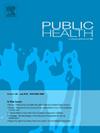Assessment of willingness to pay for a quality-adjusted life year in the post COVID-19 pandemic era in Japan
IF 3.9
3区 医学
Q1 PUBLIC, ENVIRONMENTAL & OCCUPATIONAL HEALTH
引用次数: 0
Abstract
Objectives
Data regarding willingness to pay (WTP) for one quality-adjusted life year (QALY) may need to be updated given rapidly changing modern lifestyles and dynamic shifts of population's values related to healthcare and economic factors as influenced by the COVID-19 pandemic.
Study design
A cross-sectional study using online-based questionnaire surveys.
Methods
We conducted an online survey in March 2024 of 2,000 Japanese adults aged 20–69 years to evaluate their individual WTP for one QALY gained. We constructed a case scenario in which participants were asked to answer a series of yes/no questions to evaluate their willingness to pay for a new treatment to prolong a patient's life with a certain health status for one year. The scenario was stratified by the treatment cost per case, the annual number of patients, and the health status of patients. A probit model was implemented to estimate the WTP for one QALY gained and included the total cost, the total QALYs gained, recruitment method, participant's age, sex, household income, and educational background as explanatory variables.
Results
WTP per one QALY gained was estimated to be 16.98 [95%CI 14.43−19.91] million Japanese yen. A positive QALY gain (p < 0.001), male sex (p < 0.001), and higher household income (p < 0.001) were positively correlated with having a higher WTP. A higher total cost (p < 0.001), increased age (p = 0.002) and living alone (p < 0.001) were negatively correlated with WTP.
Conclusion
Our study showed that the updated WTP threshold for a QALY gained was much larger than previously reported values. This suggests that WTP data should be reviewed and updated regularly.
日本后COVID-19大流行时代质量调整生命年的支付意愿评估
考虑到快速变化的现代生活方式以及受COVID-19大流行影响的与医疗保健和经济因素相关的人口价值观的动态变化,有关一个质量调整生命年(QALY)的支付意愿(WTP)数据可能需要更新。研究设计采用在线问卷调查的横断面研究。方法我们于2024年3月对2000名20-69岁的日本成年人进行了在线调查,评估他们的个人WTP与获得的QALY的关系。我们构建了一个案例场景,在这个场景中,参与者被要求回答一系列是/否的问题,以评估他们是否愿意为一种新的治疗方法付费,以使某种健康状况的患者的生命延长一年。根据每个病例的治疗费用、每年的患者人数和患者的健康状况对该方案进行分层。采用probit模型来估计获得一个QALY的WTP,并将总成本、获得的QALY总数、招募方法、参与者的年龄、性别、家庭收入和教育背景作为解释变量。结果每1个QALY获得的swtp估计为16.98 [95%CI 14.43 ~ 1991]万日元。正的QALY增益(p <;0.001),男性(p <;0.001),以及更高的家庭收入(p <;0.001)与较高的WTP呈正相关。更高的总成本(p <;0.001)、年龄增加(p = 0.002)和独居(p <;0.001)与WTP呈负相关。结论:我们的研究表明,获得的QALY的更新WTP阈值比以前报道的值大得多。这表明WTP数据应定期审查和更新。
本文章由计算机程序翻译,如有差异,请以英文原文为准。
求助全文
约1分钟内获得全文
求助全文
来源期刊

Public Health
医学-公共卫生、环境卫生与职业卫生
CiteScore
7.60
自引率
0.00%
发文量
280
审稿时长
37 days
期刊介绍:
Public Health is an international, multidisciplinary peer-reviewed journal. It publishes original papers, reviews and short reports on all aspects of the science, philosophy, and practice of public health.
 求助内容:
求助内容: 应助结果提醒方式:
应助结果提醒方式:


